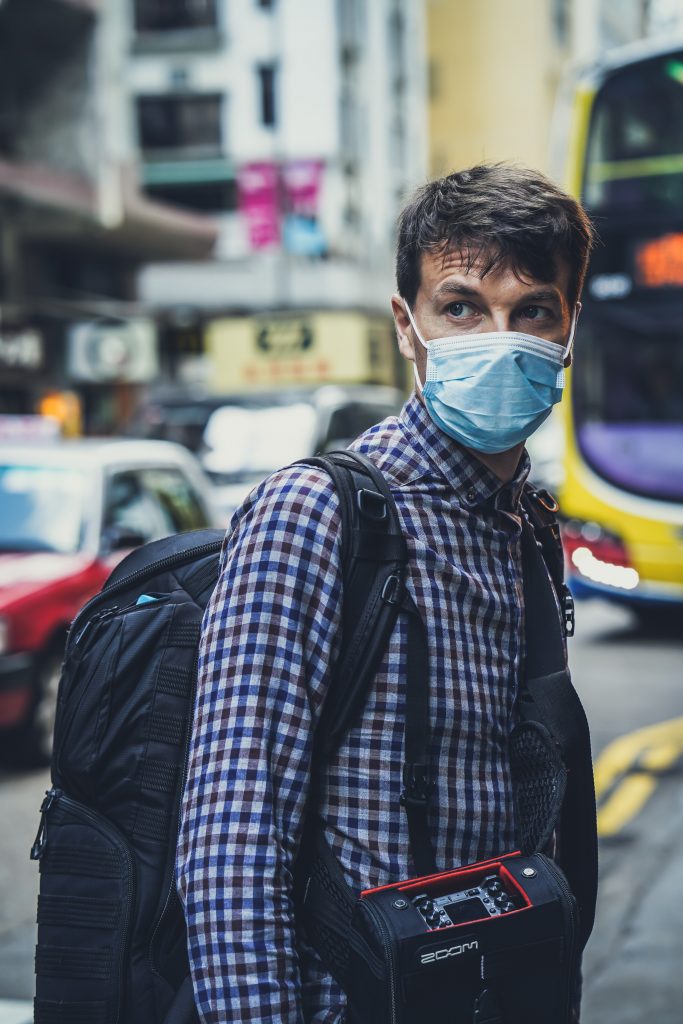In December 2019, a new type of coronavirus emerged in Wuhan, China. A few weeks later, it unexpectedly spread around the world at a rapid speed. This new coronavirus causes a disease called COVID-19. Some infected patients will only have mild symptoms that can be treated through home isolation. But, others will experience more serious symptoms like respiratory failure, pneumonia, and difficulty breathing.
It has also been shown that children and older individuals are the most vulnerable ones to the disease. Nowadays, wearing face masks is recommended to prevent yourself from being infected and avoid infecting others. But, how effective are these face masks? What type of face mask should you use and when? Keep reading to know more!
The 3 Common Types of Face Masks
There are generally 3 types of face masks you can use to prevent COVID-19:
- N95 respirators
- Surgical masks
- Homemade face masks
Let us have a more detailed discussion of each of these below.
#1 N95 Respirators
These are face masks that fit more tightly. Aside from filtering large droplets, sprays, and splashes, N95 respirators are also able to filter out 95% of tiny (0.3-micron) particles. These include bacteria and viruses. They can protect you from small respiratory droplets like the ones containing the coronavirus. But, these masks are only recommended for use inside healthcare facilities.
N95 respirators are usually oval or circular in shape. They are designed to seal tightly to faces. They use elastic bands to firmly hold the face mask to your face. Other types of N95 respirators may also have attachments called exhalation valves. These valves help you breathe inside the mask and prevent humidity and heat from building up.
Moreover, N95 respirators do not have one size that can fit in all face shapes. You need to test their fit on your face before using it to ensure that they can form a good seal. If it does not make an effective seal, you will not receive the maximum expected protection.
Once you have fit-tested the N95 respirator, you still need to continuously perform a fit test each time you put it on. You also need to know that some groups of people cannot achieve a tight fit including children.

#2 Surgical Masks
These are loose-fitting and disposable types of face masks that cover your chin, mouth, and nose. You usually use them to:
- Protect yourself from droplets with large particles, splashes, and sprays
- Prevent you from spreading potentially contagious respiratory secretions to other people
Though the design of surgical masks can vary, they are often rectangular and flat in shape with folds or pleats. The mask’s top part contains metal strips that you can shape to form your nose. They use long ties or elastic bands to hold the mask to your face while you are wearing it. You can tie these elastic bands at the back of your head or loop them behind your ears.
You can try SoMedicalSupplies Mask if you are looking for reliable surgical face masks.
#3 Homemade Face Masks
If you do not have COVID-19 symptoms, you can use face masks made of cloth to prevent the virus from spreading. It is recommended that everyone wear face masks in public places even if they are made from cloth. But of course, you also need to practice proper hygiene and social distancing in addition to wearing masks.
Below are some recommendations for wearing homemade face masks:
- Wear them in public areas especially in pharmacies and grocery stores or other areas with a lot of people.
- Do not put them on:
- Children below 2 years of age
- Unconscious people
- People who have difficulty breathing
- People who can’t remove the mask themselves
- Instead of using N95 respirators or surgical face masks, it is recommended to wear homemade face masks. This is because N95 respirators and surgical face masks should be only for first responders like healthcare workers.
- If you are a healthcare professional and are wearing a homemade face mask, you need to wear an additional face shield to cover your entire face.
- Make sure to wash homemade face masks every after using them. When you remove them, do not touch your mouth, nose, and eyes. Wash your hands also right after removing your mask.
Advantages of a Homemade Face Mask
Below are the two main advantages of a homemade face mask:
- You can make a cloth face mask from ordinary materials. This means that your supply will be unlimited.
- They can lower the possibility of asymptomatic persons from infecting other people through sneezing, coughing, or speaking.
Conclusion
Wearing a face mask especially in public places is important whether you are exhibiting COVID-19 symptoms or not. This can help prevent the spread of the virus to other people. However, do take note that there is an appropriate mask for every person. We hope that you have learned a lot from our discussion on the different types of face masks for COVID-19 protection.

